Can a Drawing Change Your Mind
An artist, a cognitive scientist, and a psychiatrist walk into a bar…
One of the best things about teaching drawing is seeing how people think without words. The second best thing is finding the words that can challenge the physical and abstract process of making a drawing. I try to use descriptive visual words that offer a doorway to a room in a memory palace. In one of the poses this week the model Geoff was on his stomach and stretched across the model stand. I saw a number of the students drawing the contour edges of the expanse of his back, drawing the container and not the contents. So I tell a story as they draw. ‘A blanket of snow has fallen over an empty parking lot obscuring all the lines of the parking spaces, the cars arrive and mayhem ensues. Don’t treat the landscape of Geoff’s back like a snow covered parking lot, Geoff’s back has bone markers and musculature that gives you the lines and directions you need to navigate the form.’
The studio should offer the feedback of a research lab, we are pattern seeking beings and the task is to do exercises that centre the figure as a way to explore patterns that connect us to the world and to communicate meaning. The mapping of a person onto a piece of paper is an incredible act of problem solving. But all of this is at risk because what we are best at is also what we are most easily hijacked by.
The rich real world of pattern and sensation has been over written by an onslaught of visual stories that intubate our cognition, breathing a visual world into our consciousness that we have no ability to act within. We need to have a mind to change and the practice of drawing, the engagement of mind and body may be one path to break through the thick ice we are trapped beneath. How we grasp and fit our environment gives us a sense of purpose, but how do we hold onto something that is in the air we breath.
Reclaiming our attention is our first task, but there is another problem we all share, getting caught in the sticky web of doing and making. We get lost in the thingness of our tasks. I can see it in the drawing process where the form is being constructed like a Lego building, each piece snapped onto the next. You might as well be drawing with a cake piping bag or a chop saw. We need to see more than the sum of the parts, the drawing needs the dynamics of uncertainty as an opportunity to discover ways of making, rather than steps to mastery.
Seeing the big picture, and constructing an imaginal language that resonates in both our body and mind is central to drawing. Christopher Nolan’s film, Inception has Leonardo DiCaprio’s character, a dream extractor, use a totem, a spinning top that will spin forever if he is dreaming and fall if he is awake. He can be caught forever in this dream world, just as we can lose ourselves in our phones and screens. We give our attention away so cheaply today because there is no tiger in the tall grass we have to be wary of. But we have traded a predator for a more terrifying monster, meaninglessness. I am trying my best to pull my eyes away from the flaming hell of X and use my sketchbook as my own totem to know that I am awake.




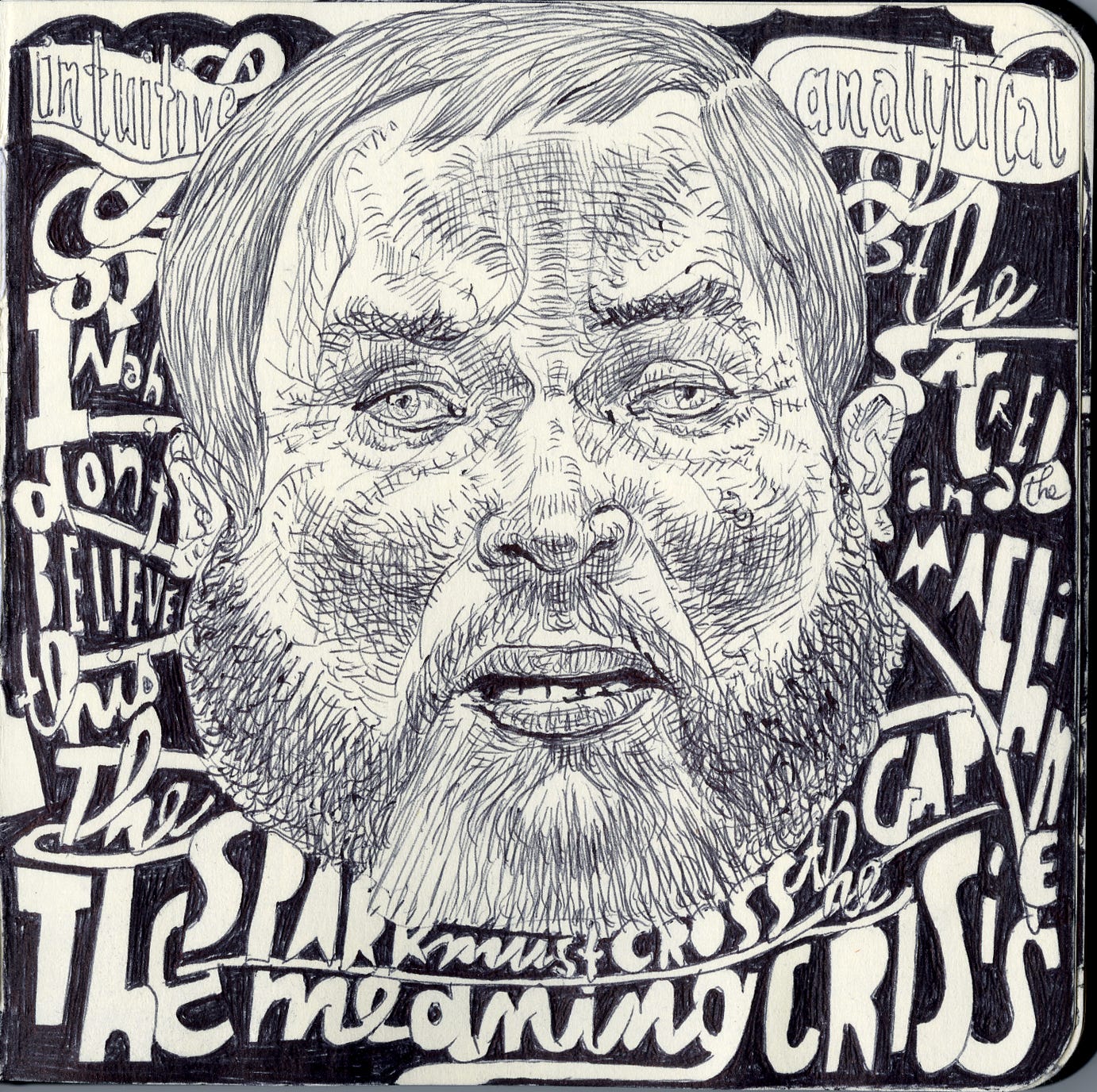
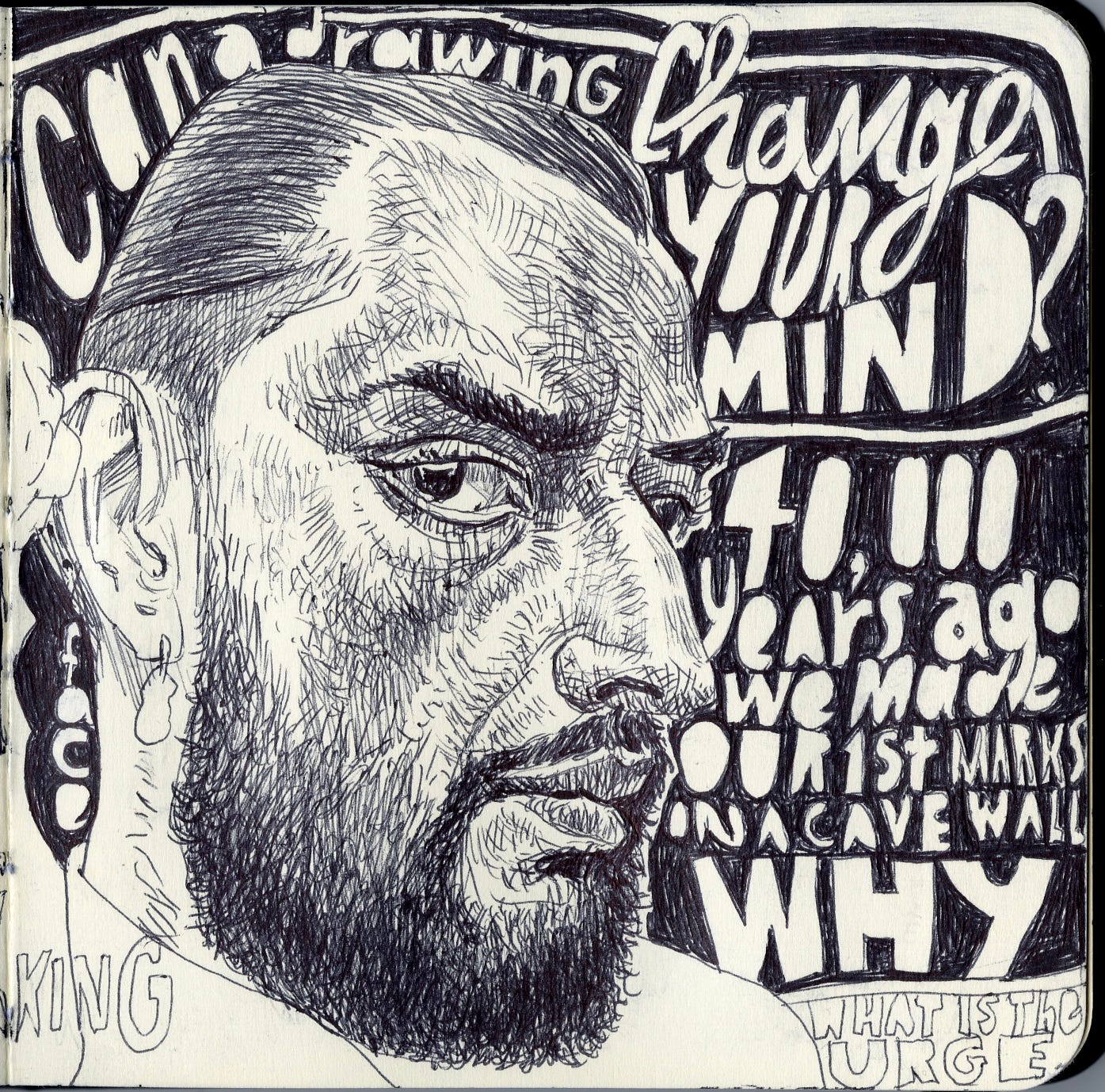
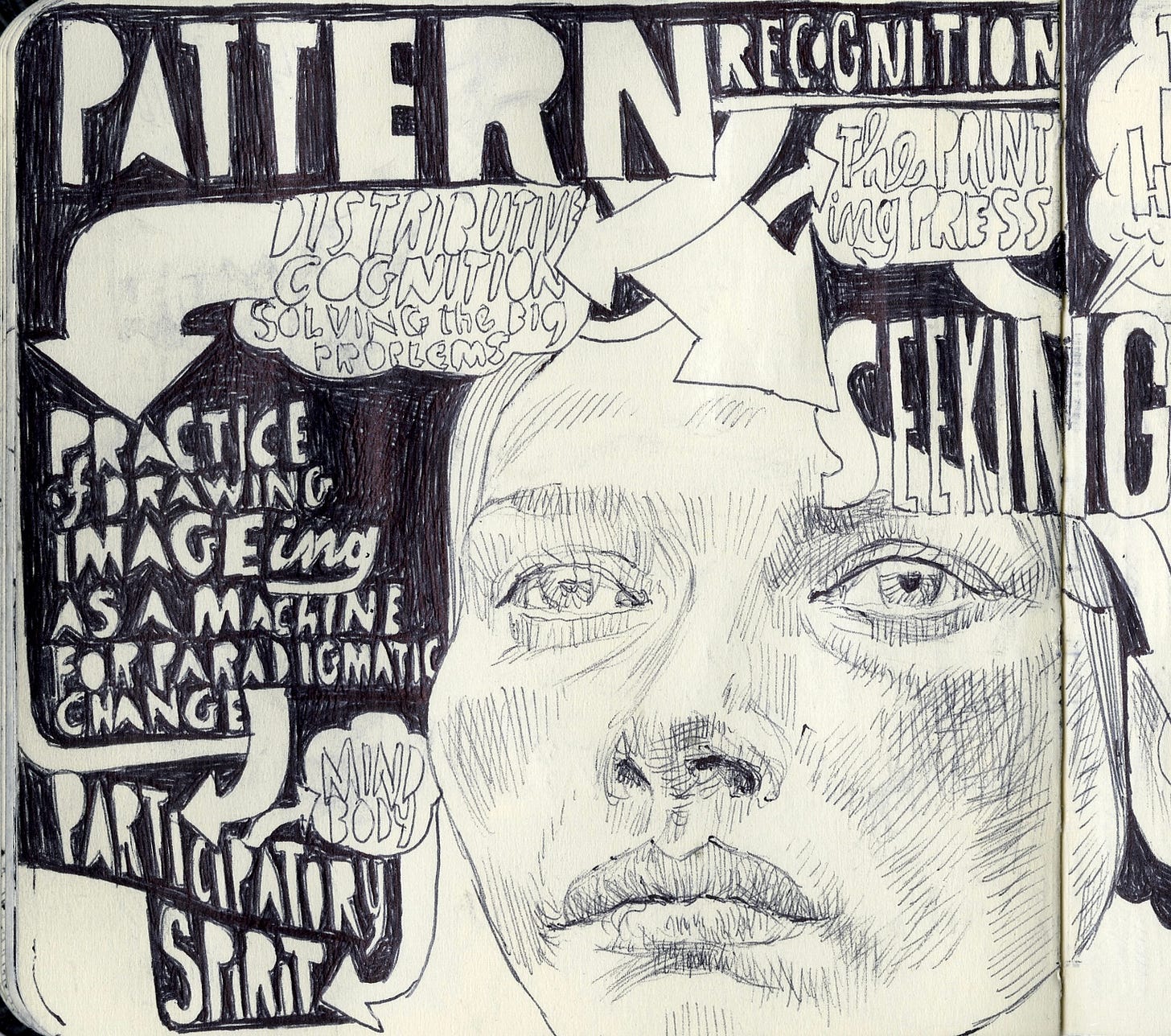
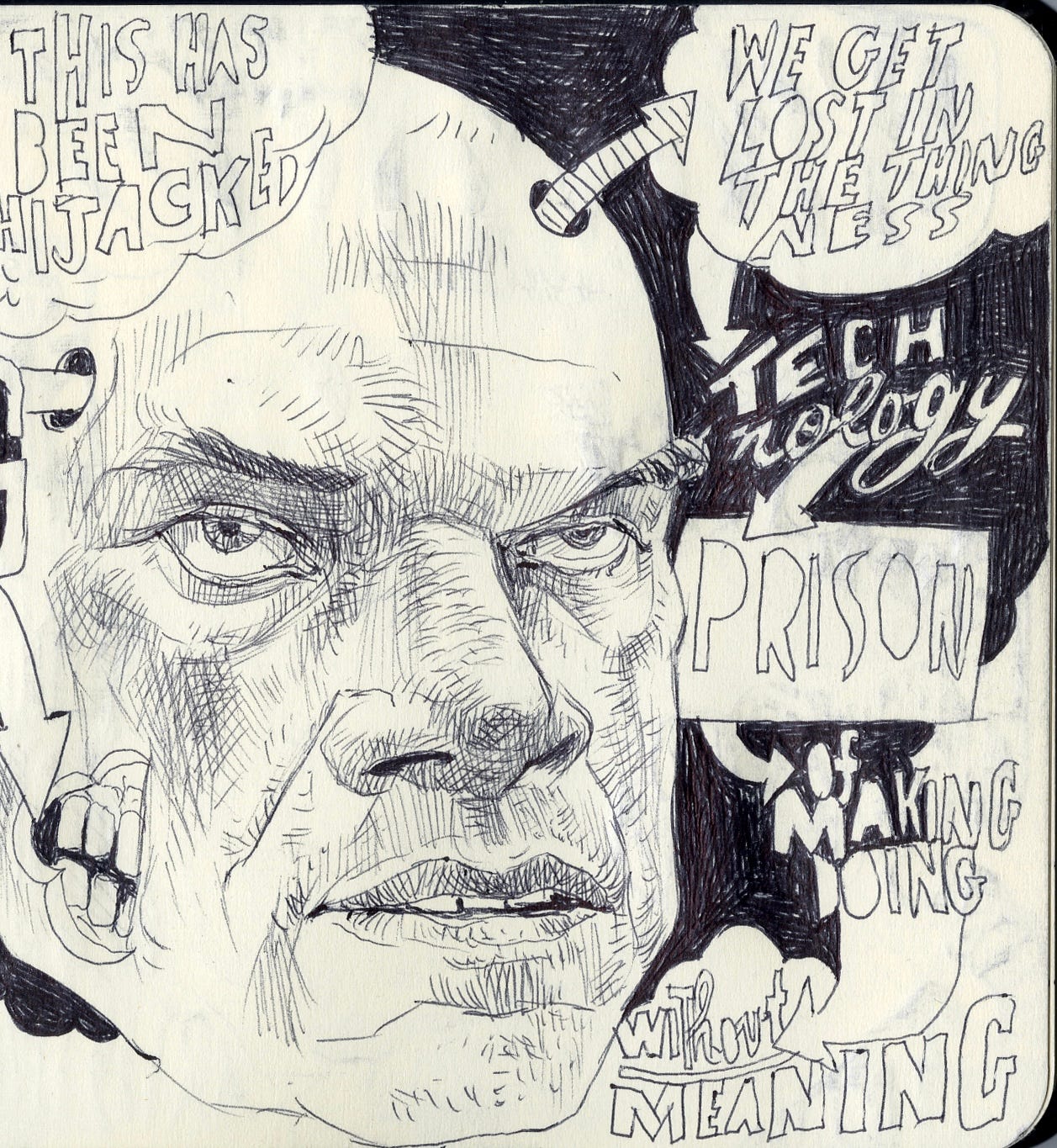
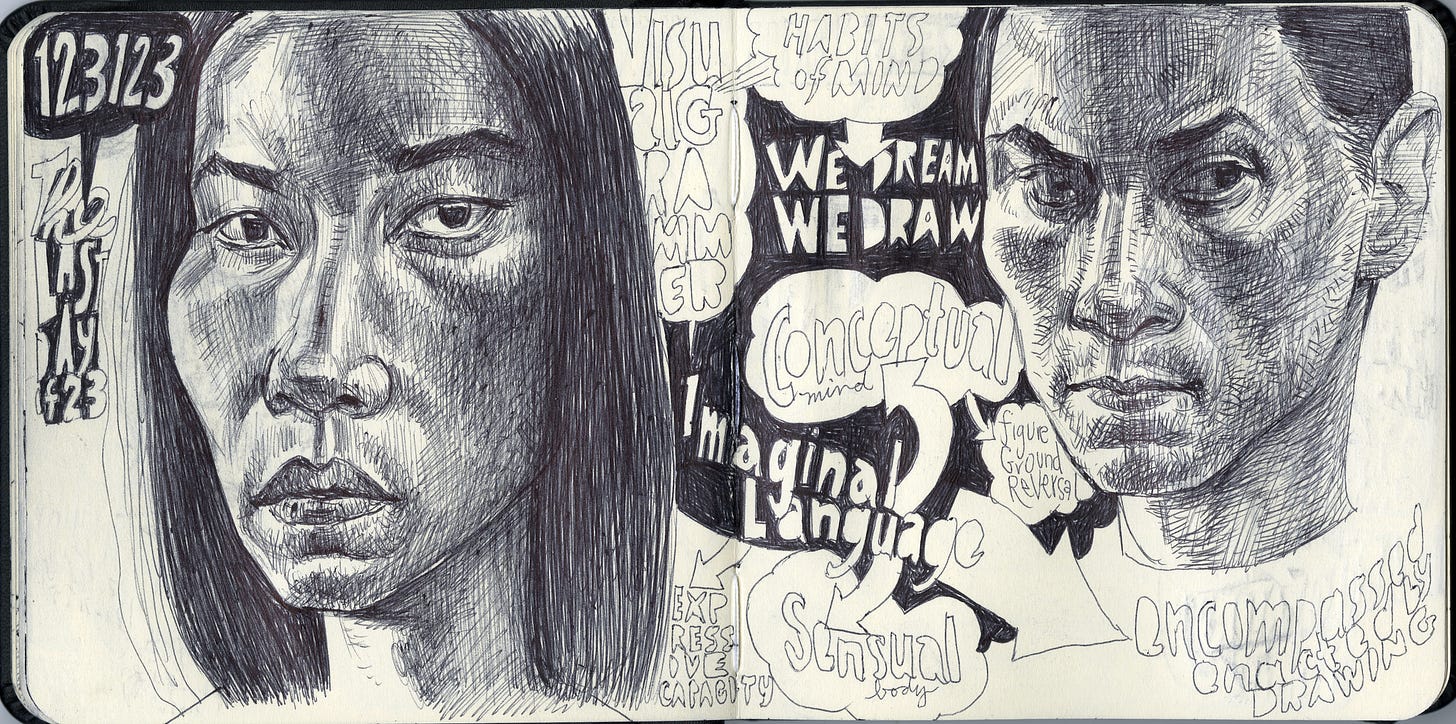
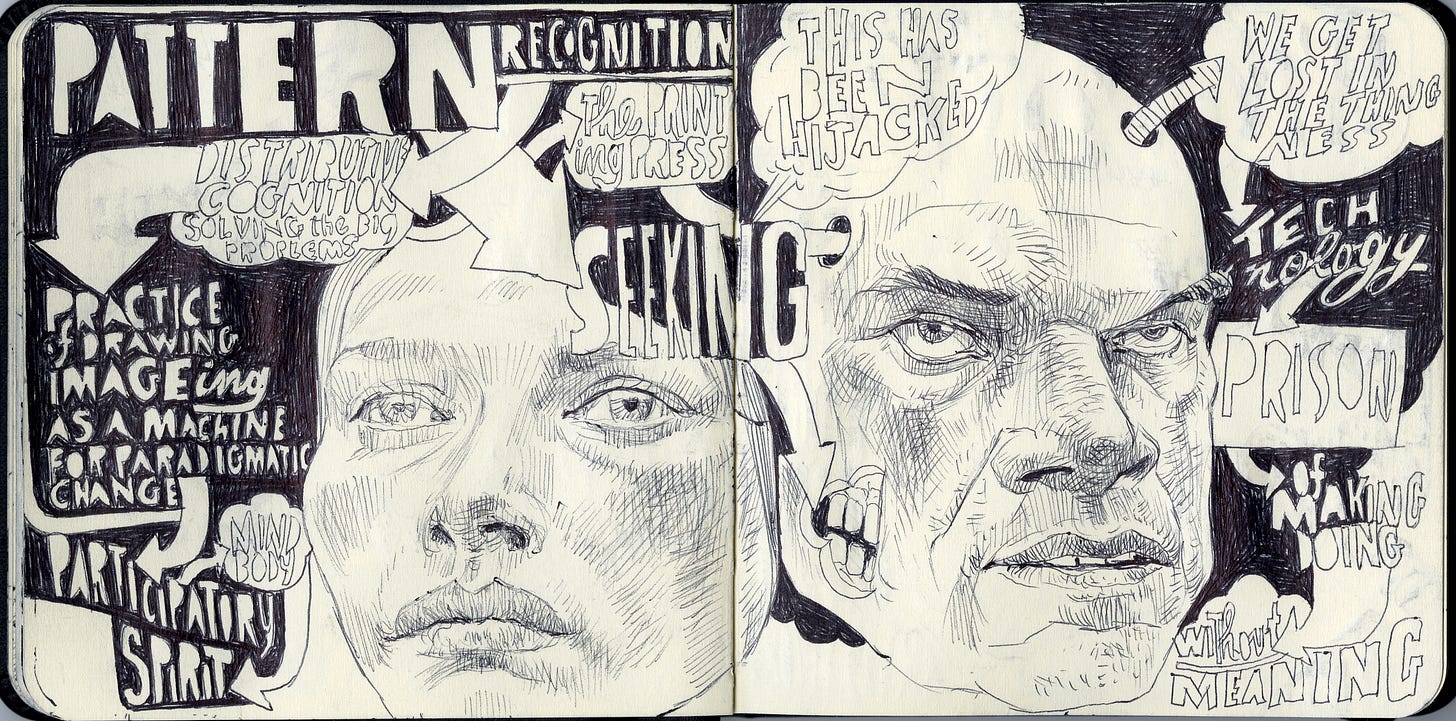
Wow! Didn’t see that closing paragraph coming. Beautiful.